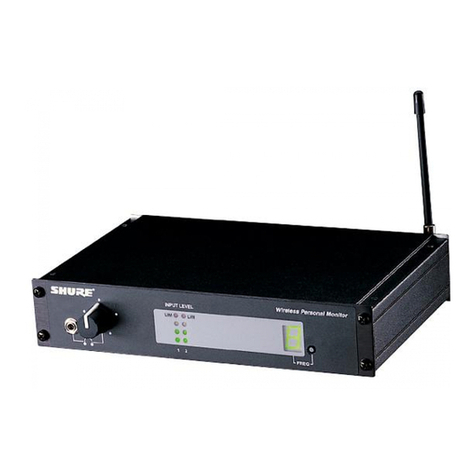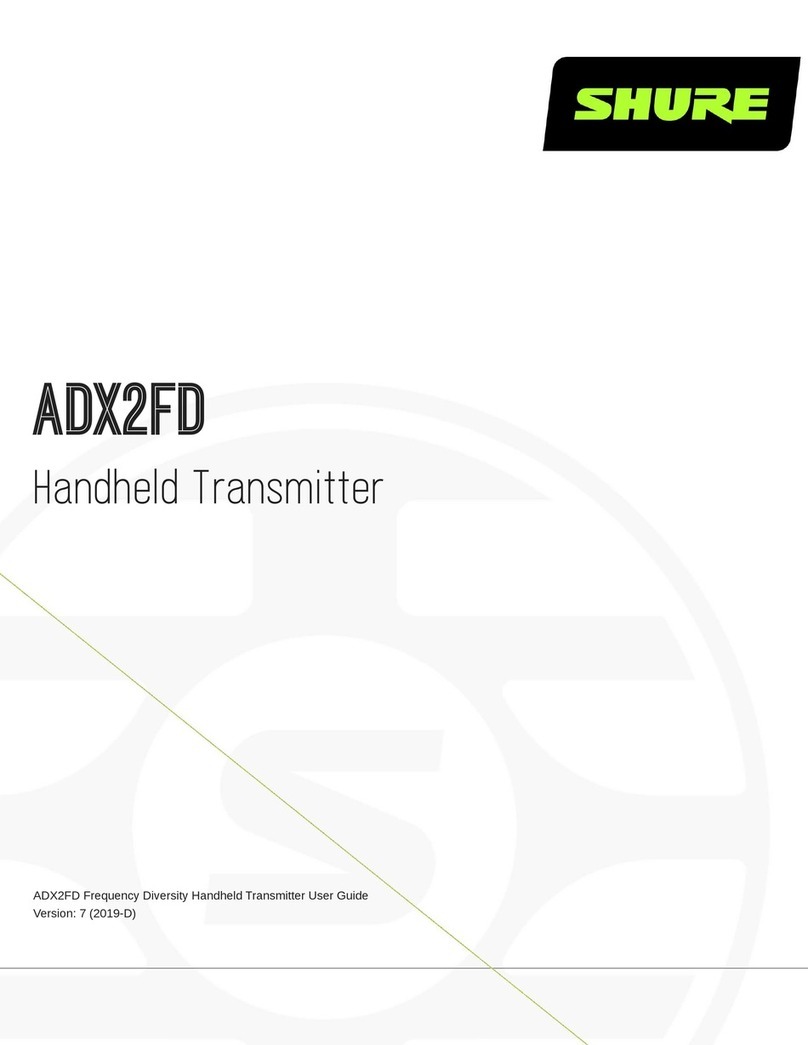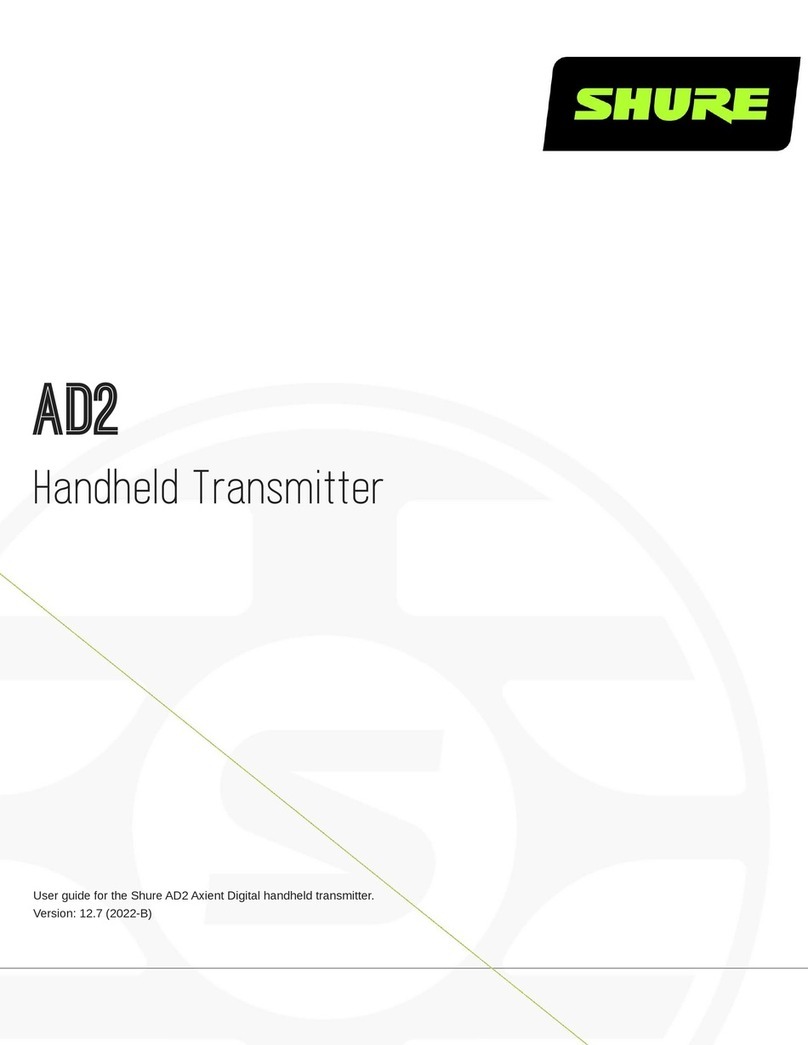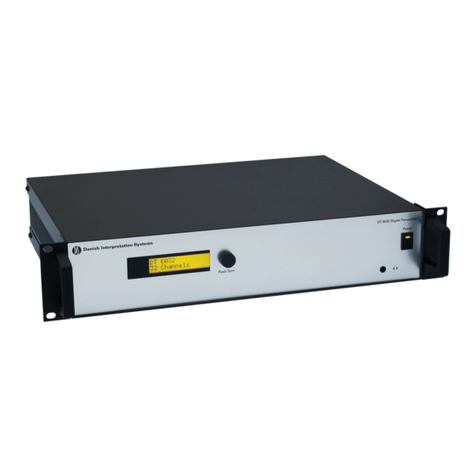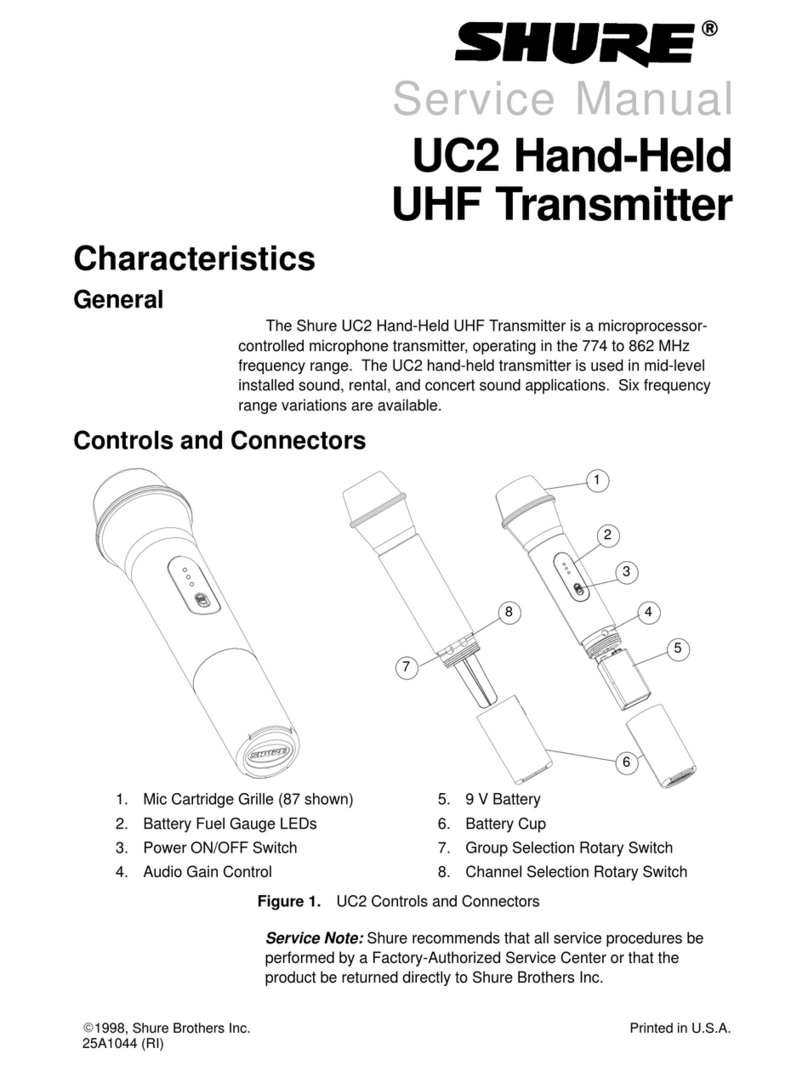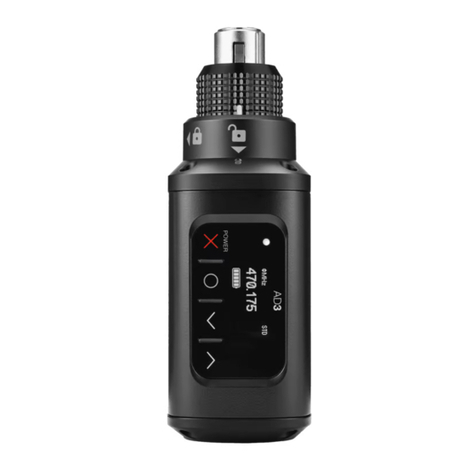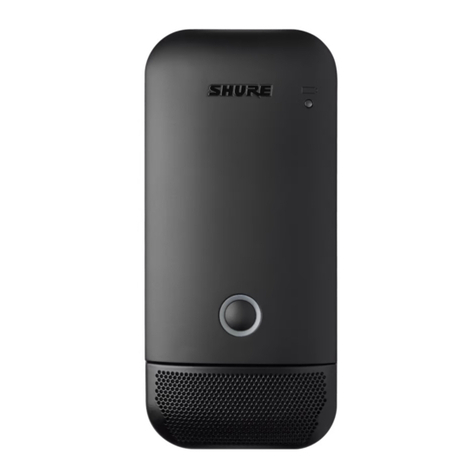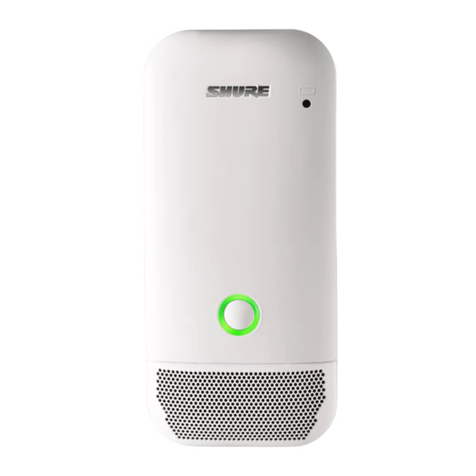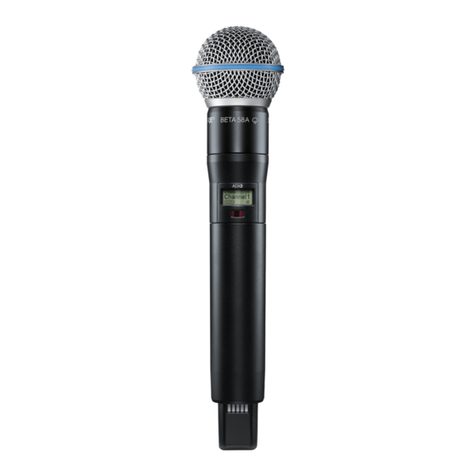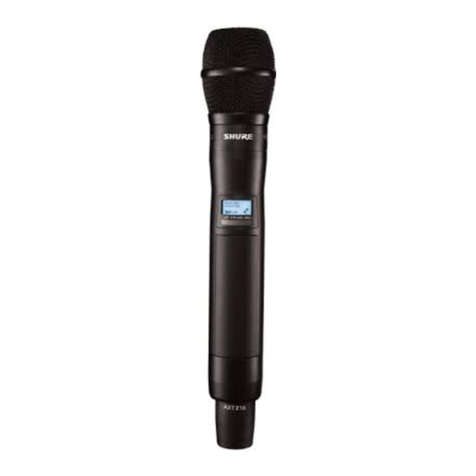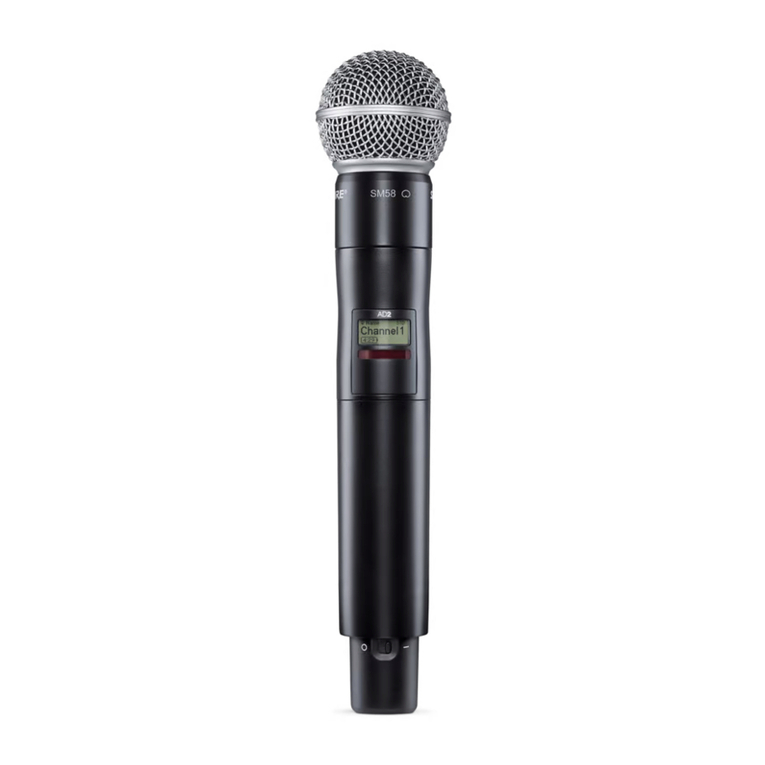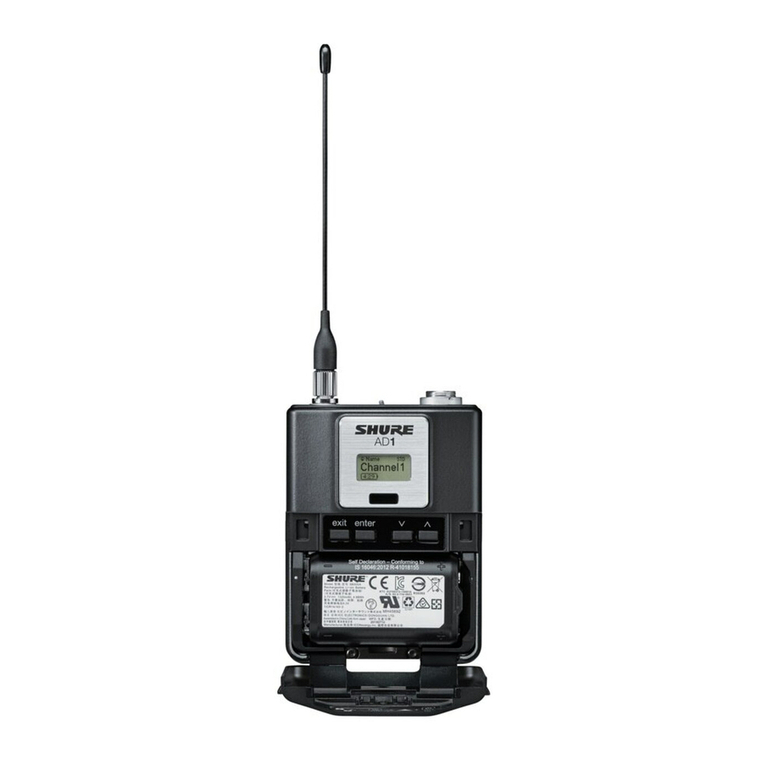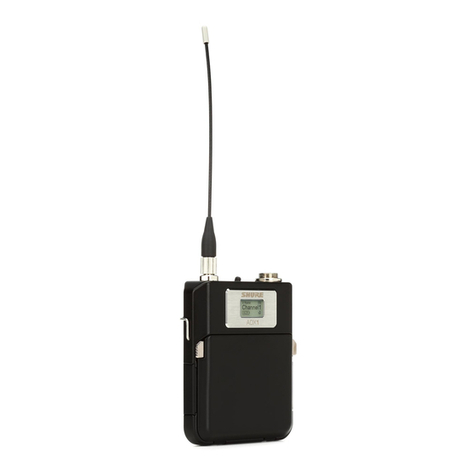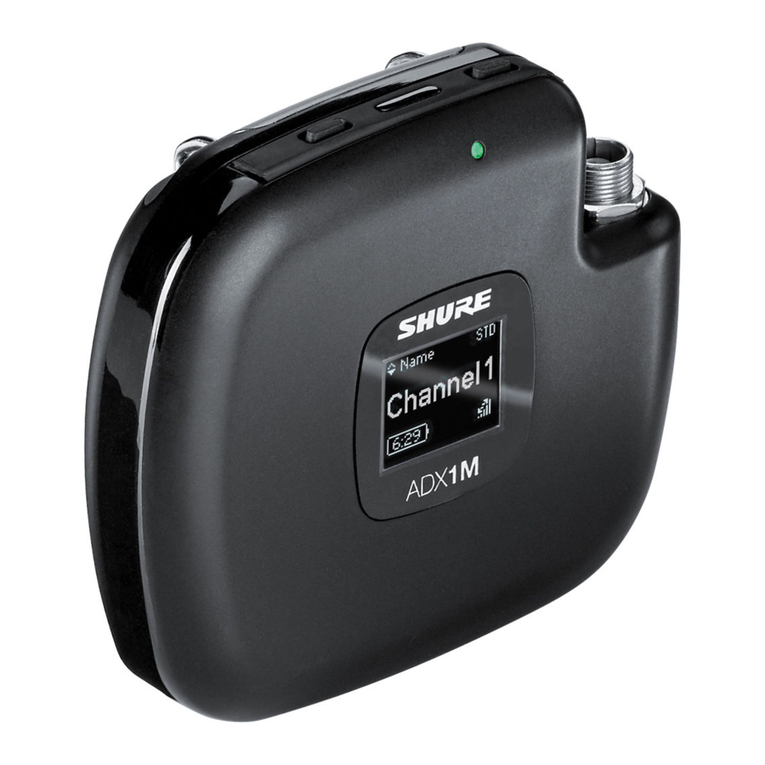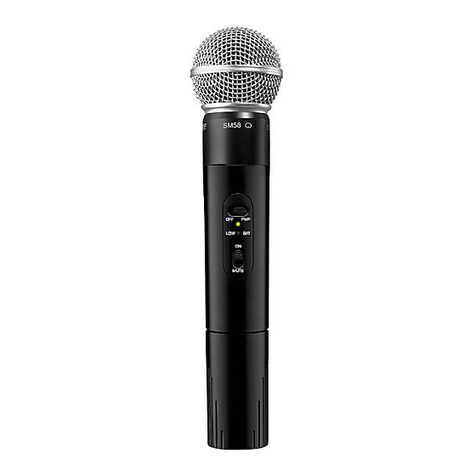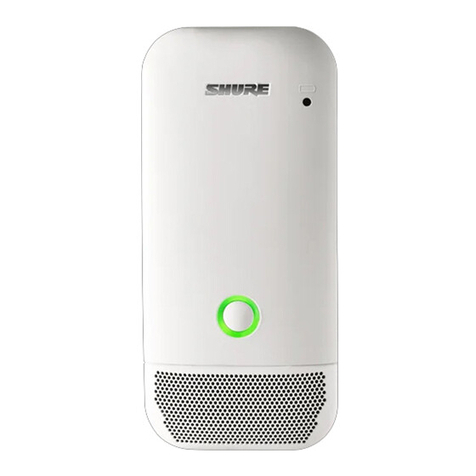
Shure U1/U1L Body-Pack UHF Transmitter
3
25C1021 (BG) Circuit Description
Rf Section Processed audio enters R243, an internal potentiometer adjusted for
45 kHz deviation (100% modulation) with a –7.2 dBV, 1 kHz tone, at the
output of the front audio stage (pin 1 of U201). On JB models, R243 is
adjusted for 5 kHz deviation with –63.2 dBV, 1 kHz tone, at the input to
the transmitter.
The audio is then fed to the tuning voltage pin of the voltage controlled
oscillator (VCO) and modulates the carrier directly. The use of a phase
locked-loop (PLL) frequency synthesized system eliminates the need for
multiplier stages, resulting in a much higher degree of spectral purity. The
VCO is shielded against interference from external rf fields. Regulated
+5 Vdc power from the dc-to-dc converter ensures frequency stability,
even if the battery voltage changes.
At the output of VCO U205, the rf signal splits into two paths. The
output of the VCO is coupled by C244 to the frequency control pin of
synthesizer U204. The synthesizer’s internal circuitry divides the signal
as necessary to reach the desired reference frequency.
The synthesizer contains a quartz-controlled reference oscillator
circuit, including a 4.0 MHz crystal (Y201), that is adjusted by means of
trimmer capacitor C239.
The transmitter output frequency is user-selectable. Frequency
selection is made via microprocessor U103, which interfaces with the
user by means of the mode/select switches. The output of the synthesiz-
er is a series of pulses that are integrated by a passive loop filter (R238,
C245, R240, C266, C267, R239, and C247) to produce a control voltage
signal. The control voltage signal is then connected to the VCO through
amplifier U210A, which is used to isolate the PLL filter from the audio
modulation signals.
The VCO output is also coupled to an rf power amplifier through a
resistive pad consisting of R254, R255, R256, R257, and an LC match-
ing network containing C261, L209, and C248. The rf power amplifier,
dual gate MESFET Q208, is fixed-tuned and configured as a common
source device.
Amplifier stability is obtained through resistive loading on the input,
R247. The output of Q208 contains a low-pass matching network (L206)
and an LC-type low-pass filter (LP206), which provide a high degree of
spectral purity. The output of the low-pass filter feeds a microwave isola-
tor that reduces the production of reverse third-order intermodulation
products.
The transmitter is capable of delivering a maximum of +10 dBm
(10 mW) to the 50 Ωantenna. During transmitter power-up and frequency
selection, rf power is muted by bringing the base of Q209 high. This pro-
vides approximately 45 dB rf attenuation until the PLL has locked. The
transmitter rf is then unmuted by bringing the base of Q209 low. During
transmitter power off conditions, voltage is first removed from the VCO by
bringing the base of Q207 high. In this way, the transmitter carrier signal is
not allowed to drift off frequency during power on or power off conditions.
